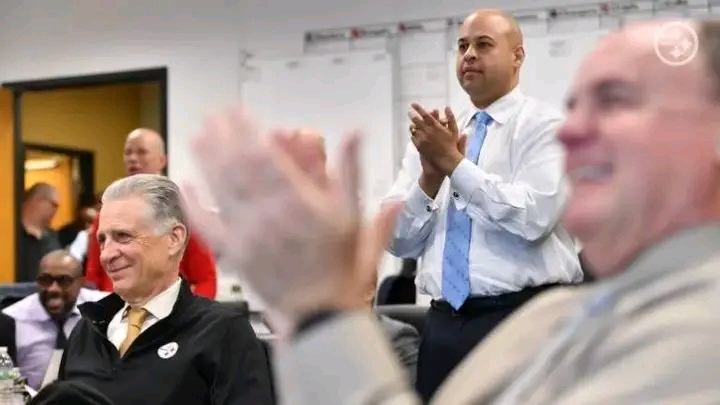Pittsburgh Steelers GM Omar Khan gained significant insights from Kevin Colbert, yet after three years, the contrasts are quite clear. Admittedly, his situation varies as well, and we must remember that when evaluating Colbert’s legacy and choices. However, one aspect stands out above all else: a readiness to exchange personnel resources.
During Colbert’s time as the Steelers’ GM, he made relatively few player trades, and seldom without a reason. His most prominent player transaction included trading WR Santonio Holmes to the New York Jets. Although that may bear similarities to trades made by Omar Khan, the Holmes situation had reached a critical point. They were aware he would begin the next season under suspension and had no intention of re-signing him.
Eventually, Colbert was also forced to trade Antonio Brown, as Brown left the Steelers with no options. The Steelers easily could have kept Diontae Johnson or George Pickens, but decided against it. Omar Khan traded Johnson for cornerback Donte Jackson, a regular starter. Pickens received a third-round selection—again, being aware they wouldn’t retain him. The Steelers have just given him a three-year extension, so he’s taking care of them.
Khan made his first significant move at the 2023 trade deadline by trading WR Chase Claypool. This is a player they definitely could have retained, but chose to let go. Certainly, the Bears traded a second-round pick for him, and likely even Colbert would have accepted that offer. He traded Martavis Bryant, but again, suspensions played a role in that choice.
But would Kevin Colbert have ever executed the Minkah Fitzpatrick trade? Personally, I don’t believe so. This kind of agreement shows a difference in philosophy compared to Omar Khan—closer to the Patriots. Bill Belichick often preferred to part ways with a player quickly rather than retain him for an extended period.
As veteran Steelers fans are aware, Colbert and the organization consistently dealt with criticism for retaining players for too long. Instead of attempting to recover resources while they still hold worth, they valued that “one helmet” mentality. Certainly, they maintain a one-helmet strategy, particularly for exceptional athletes. Cameron Heyward is a one-helmet player, and T.J. Watt will probably be one as well. The Steelers were Fitzpatrick’s second helmet, so it was irrelevant.
Currently, the Steelers are not trading players who excel in their performance and serve as leaders in the locker room. Players such as Chase Claypool, Diontae Johnson, George Pickens, and Minkah Fitzpatrick each had their flaws in some way. What does this imply for the Steelers as they progress?
Once more, Omar Khan and Kevin Colbert are not working with the same deck. The Steelers had a franchise quarterback during much of Khan’s time, and Khan is searching for one. Colbert aimed to build perennial Super Bowl contenders instead of gathering assets. Since becoming GM, Khan has completely renovated entire rooms several times, particularly the quarterback room. However, after three years, do we possess sufficient data to accurately interpret these trends? Would he act like Colbert did if faced with a similar scenario involving a franchise quarterback?
